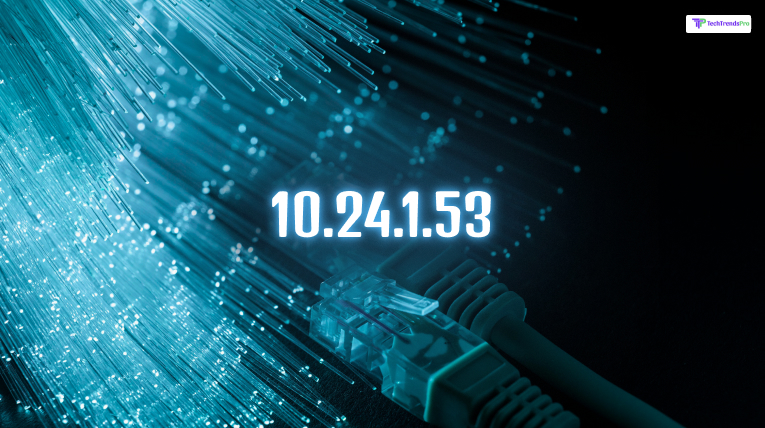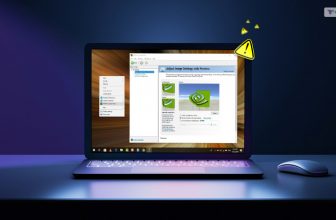
With networking and IP addresses, you can sometimes be presented with apparently random numbers like 10.24.1.53.
Wherever you’ve located it, in your router logs, security software, or network tests, having an idea of what this IP address is can help you improve handling and troubleshooting your systems.
This piece will provide a clear summary of 10.24.1.53—its role within networking, how to interact with it using bots and APIs, and why it won’t provide location information. We’ll also provide key terms for private and public IPs, privacy, and traceability.
What Is 10.24.1.53?

10.24.1.53 is an IPv4 private IP address, within the Class A private IP block reserved by the Internet Assigned Numbers Authority (IANA). Specifically, it’s within the 10.0.0.0 to 10.255.255.255 range, which is reserved for private networks.
That is to say:
- It’s not routable on the public internet.
- It’s mainly utilized in LANs (Local Area Networks).
- You can mark it with internal devices like printers, routers, servers, or computers.
Why 10.24.1.53 Won’t Show Location Information?
When you try to trace 10.24.1.53 using an IP lookup service, you won’t receive geographic location details.
That’s why:
- Private IPs are not publicly listed.
- They are not registered with global authorities like ARIN or RIPE.
- Databases of locations like MaxMind or IP2Location don’t support private IPs.
Public IP addresses (such as 203.0.113.45) alone can be looked up to geolocation details like country, city, or ISP.
IP Lookup And 10.24.1.53
Plugging 10.24.1.53 into an IP lookup tool will typically give you:
- A message like “Private IP Address – No data available.”
- Perhaps some metadata like: “RFC 1918 reserved.”
Some handy IP lookup tools are:
These tools work great for public IPs, but they’ll hit an obstruction with private ones like 10.24.1.53.
Is 10.24.1.53 a Proxy?
No, 10.24.1.53 is not a proxy IP by nature.
However, it may be used as part of an internal proxy server in a company or campus network.
For example:
- A local web proxy could be operating on 10.24.1.53.
- Relay HTTP/HTTPS traffic over this IP for caching or filtering.
In order to determine if it’s being used as a proxy, you’d need:
- Internal network setup data.
- Redirected traffic log data.
- Headers of a proxy server or debugging data.
Technical Info for 10.24.1.53
The following are the most significant technical facts of 10.24.1.53:
- IP Type: IPv4
- Address Class: A (Private)
- CIDR Notation: 10.0.0.0/8
- Range: 10.0.0.0 – 10.255.255.255
- Reserved By: IANA for private use (RFC 1918)
- Common Use: LAN device assignments (DHCP or static)
The IP can be set by hand or dynamically by DHCP servers.
How To Utilize Slack, Reddit, Or Telegram Bots For 10.24.1.53?

Those websites do not natively understand private IPs, but you can create bots or scripts for inner notice and report about 10.24.1.53:
Slack Bots
- Utilize the Slack API to create a bot that sends a notification whenever a device on 10.24.1.53 is online or offline.
- Use software like Node.js with @slack/web-api.
Reddit Bots
- Public Reddit bots usually have nothing to do with internal network IPs.
- You can, however, write an automation script that will send notifications to private subreddits or logs if 10.24.1.53 is engaged.
Telegram Bots
- Build a bot with BotFather and utilize Telegram’s Bot API to send messages.
- Example: Set a server script that will ping 10.24.1.53 and tell you if it doesn’t work.
Query 10.24.1.53 Using API
Since 10.24.1.53 is local, you can’t query it via public IP APIs like ipinfo.io or ipapi.co. Internally, however:
- Use ping, nmap, or curl for communication locally.
- Install a RESTful API service on the device 10.24.1.53 to provide queries.
- Use status or logs with monitoring tools such as Zabbix, Nagios, or Prometheus.
Example:
curl http://10.24.1.53/status
This only works if you’re on the same network and a service is running at that endpoint.
10.24.1.53 And Network Privacy

Using 10.24.1.53 enhances network privacy because:
- It stays hidden from external users.
- It’s protected behind NAT (Network Address Translation).
- It’s not internet-connected unless configured to be so with port forwarding or a proxy.
That makes it suitable for:
- Internal business applications
- Development environments
- Secure LAN device communication
Can It Be Traced?
Not on the internet.
- Externally: Not traceable by WHOIS, geolocation, or IP tracking software.
- Internally: Yes. Your IT department or admin software can track device activity for 10.24.1.53.
Internal tracing methods:
- DHCP logs
- Network monitoring software
- Switch/router MAC address tables
Related Resource: Network Topology: 6 Network Topologies Explained – Splynx
What If 10.24.1.53 Shows Up On Logs?
An occurrence of 10.24.1.53 in your logs typically indicates:
- A computer in your internal network is sending/receiving information.
- It may be a server, a client computer, or an IoT device.
Action steps:
- Ping the IP: ping 10.24.1.53
- Locate MAC address: arp -a
- Scan for open ports/services with nmap
nmap -sP 10.24.1.53
Public vs Private IP: Quick Guide
| Feature | Public IP | Private IP (e.g., 10.24.1.53) |
| Routeable on Internet | Yes | No |
| Traceable | Yes (Geo/IP Lookup) | Only within internal network |
| Assigned by | ISP | Router/DHCP Server |
| Unique Globally | Yes | No (reused over networks) |
| Examples | 198.51.100.5, 8.8.8.8 | 10.0.0.5, 192.168.1.1, 10.24.1.53 |
Why You Should Know Your Private IP?
Having your own private IP helps you:
- Troubleshoot network issues
- Connect to internal devices like NAS or printers
- Secure your systems by monitoring unauthorized IPs
- Configure firewalls and routing configurations
- Configure port forwarding or VPN servers
Use ipconfig (Windows) or ifconfig/ip a (Linux/macOS) to find your local IP.
IP2Location Demo Account Benefits
When you need to experiment with public IPs, an IP2Location demo account offers:
- Easy IP geolocation search
- ASN and ISP details
- Time zone, proxy type, domain, etc.
- Can be viewed through a dashboard for verification and testing IP data
Note: It won’t work for 10.24.1.53 (private IP), but it’s awesome to use with public IP research.
Other Ways To Research IPs Like 10.24.1.53
To research further on private IPs like 10.24.1.53:
- Scan the local network with nmap
- Use Wireshark to sniff traffic to/from the IP
- Use internal DNS and DHCP logs to look up hostnames by
- Use asset management tools to allocate devices
Also, consider these tools:
- Angry IP Scanner
- SolarWinds IP Address Manager
- Advanced IP Scanner
Is 10.24.1.53 Important?
While 10.24.1.53 will not be a busy bee in public IP utilities or geolocation software, it is priceless in private networks.
Having some idea of how valuable it is can help IT professionals and inquisitive brains gain a better level of control over their networks, enhance security, and debug more effectively.
If it appears on your server logs or you are trying to develop tools based on it, comprehension of private IPs is something necessary for employees in today’s virtual age.
Additional Readings:






